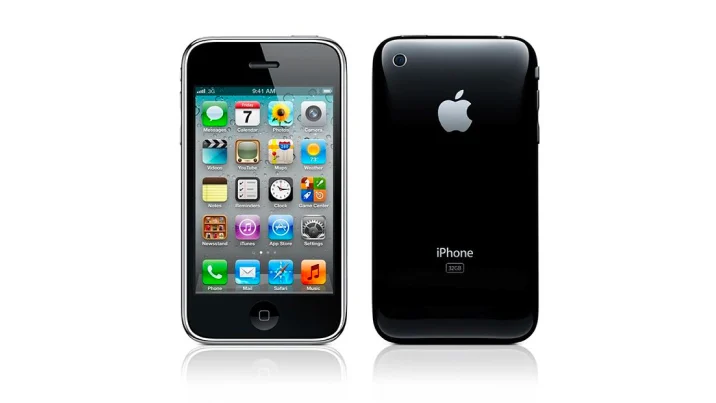
The evolution of mobile application development: From simple tools to smart ecosystems
Mobile application development has come a long way from the days of basic utility apps and pixelated games. Over the past two decades, it has evolved into a complex, fast-paced ecosystem that powers everything from banking and healthcare to entertainment and e-commerce. With over 6 billion smartphone users worldwide, mobile apps have become central to how we live, work, and connect and their development continues to evolve at a rapid pace.
This article explores the major milestones in mobile app development, how technology has shaped the process, and what the future holds.
Early days: The rise of mobile apps (1990s–early 2000s)
The concept of mobile applications began with simple tools built into early mobile phones think calculators, calendars, or Snake on Nokia devices. These were pre-installed, closed apps developed specifically for the hardware they ran on.
The release of BlackBerry OS and Symbian introduced more functionality, allowing users to install third-party apps, primarily for business and productivity. However, development was fragmented, requiring developers to code separately for each device or carrier.
The smartphone revolution (2007–2010)
The game-changer came in 2007 with the launch of the iPhone, followed by the App Store in 2008. For the first time, developers had a centralized platform to build, distribute, and monetize apps. Around the same time, Google introduced Android and the Google Play Store, opening the floodgates for a diverse, open-source mobile ecosystem.
Key developments in this era:
- Introduction of native app development using Objective-C (iOS) and Java (Android)
- Improved hardware and touch interfaces enabling richer user experiences
- A new app economy that allowed individual developers and startups to thrive

Cross-platform and hybrid development (2010s)
As demand for mobile apps surged, businesses faced a challenge: building separate codebases for iOS and Android was time-consuming and expensive. This led to the rise of cross-platform development frameworks like:
- PhoneGap/Cordova – web-based apps wrapped in native shells
- Xamarin – apps written in C# with access to native APIs
- React Native (by Facebook) – hybrid apps using JavaScript with near-native performance
- Flutter (by Google) is a UI toolkit using Dart for high-performance apps on multiple platforms
These tools helped reduce costs, speed up development, and allow teams to target multiple platforms with a single codebase though they sometimes came with trade-offs in performance or platform-specific features.
The intelligent era: AI, cloud, and real-time experiences
(late 2010s–2020s)
Mobile apps began integrating more advanced technologies to meet evolving user expectations:
- Cloud integration allowed real-time syncing across devices and seamless scalability
- Artificial intelligence (AI) enabled personalized experiences, chatbots, and predictive features
- Augmented reality (AR) and virtual reality (VR) opened new frontiers for gaming, shopping, and training
- IoT (Internet of Things) brought mobile apps into smart homes, cars, and wearable devices
Development also became more agile, with DevOps, CI/CD pipelines, and mobile-first design ensuring faster releases and higher quality.
Security, privacy, and regulation
With apps handling sensitive data from health records to financial transactions mobile security became a top priority. Developers now had to navigate:
- Data protection regulations (e.g., GDPR, CCPA)
- Secure authentication protocols (e.g., biometrics, OAuth)
- End-to-end encryption and secure storage
- Security isn’t just a feature anymore — it’s a baseline expectation.
Progressive web apps and the blurring of boundaries
In recent years, Progressive Web Apps (PWAs) have emerged as a powerful alternative to native apps. PWAs offer app-like experiences through the web, with advantages like:
- No installation required
- Offline capabilities
- Cross-device compatibility
This evolution reflects a broader trend: the lines between mobile apps, web apps, and desktop applications are increasingly blurred, thanks to responsive design and cloud-based services.
What’s next for mobile application development?
As we look ahead, several trends are shaping the future of mobile development:
- 5G enabling faster, more immersive mobile experiences
- AI-first development where apps learn and adapt to user behavior
- Voice and gesture interfaces replacing traditional touch UIs
- Low-code/no-code platforms making app creation more accessible
- Sustainable and inclusive design ensuring accessibility and energy efficiency
The focus is shifting from just building apps to crafting intelligent ecosystems that integrate seamlessly into users’ lives.
Conclusion
The evolution of mobile application development reflects the pace of technological innovation itself. From simple utilities to smart, cloud-connected experiences, mobile apps have transformed the digital landscape. For developers, businesses, and users alike, staying ahead means embracing continuous learning, experimentation, and a user-first mindset.
One thing’s certain: mobile development will continue to evolve — and so will the way we connect with the world through it.



